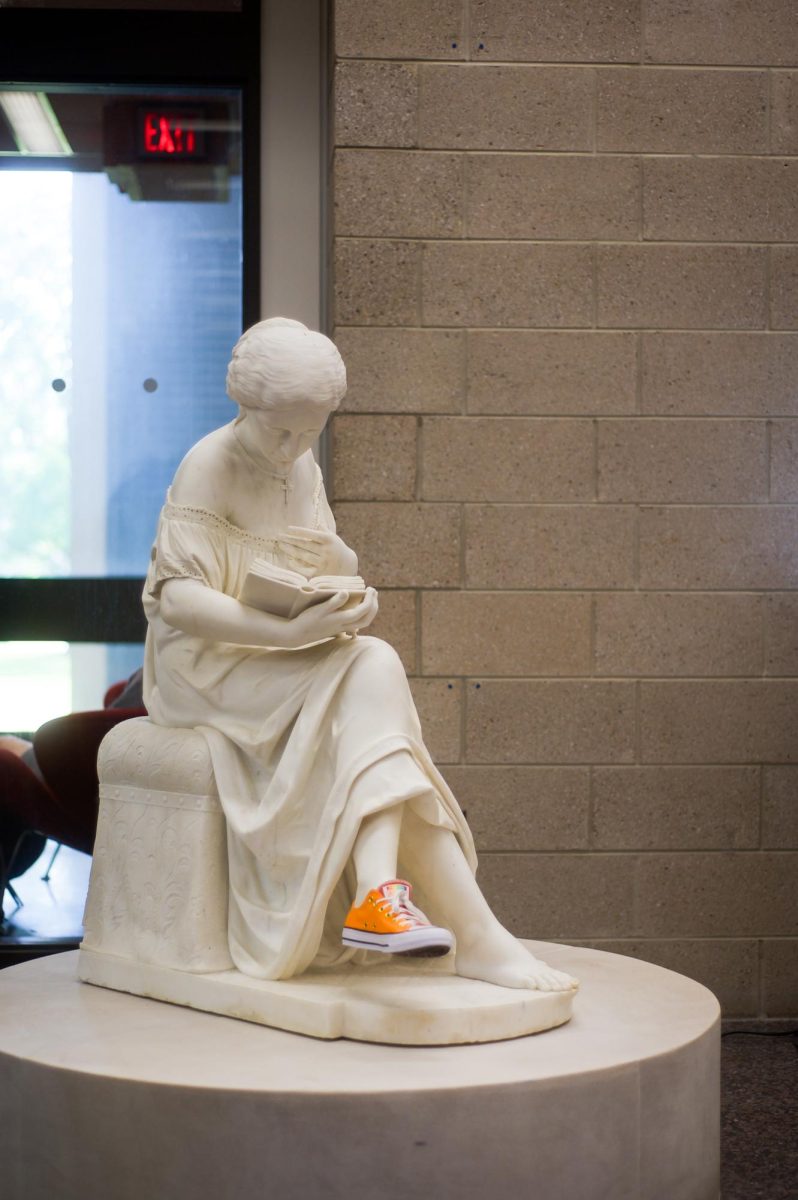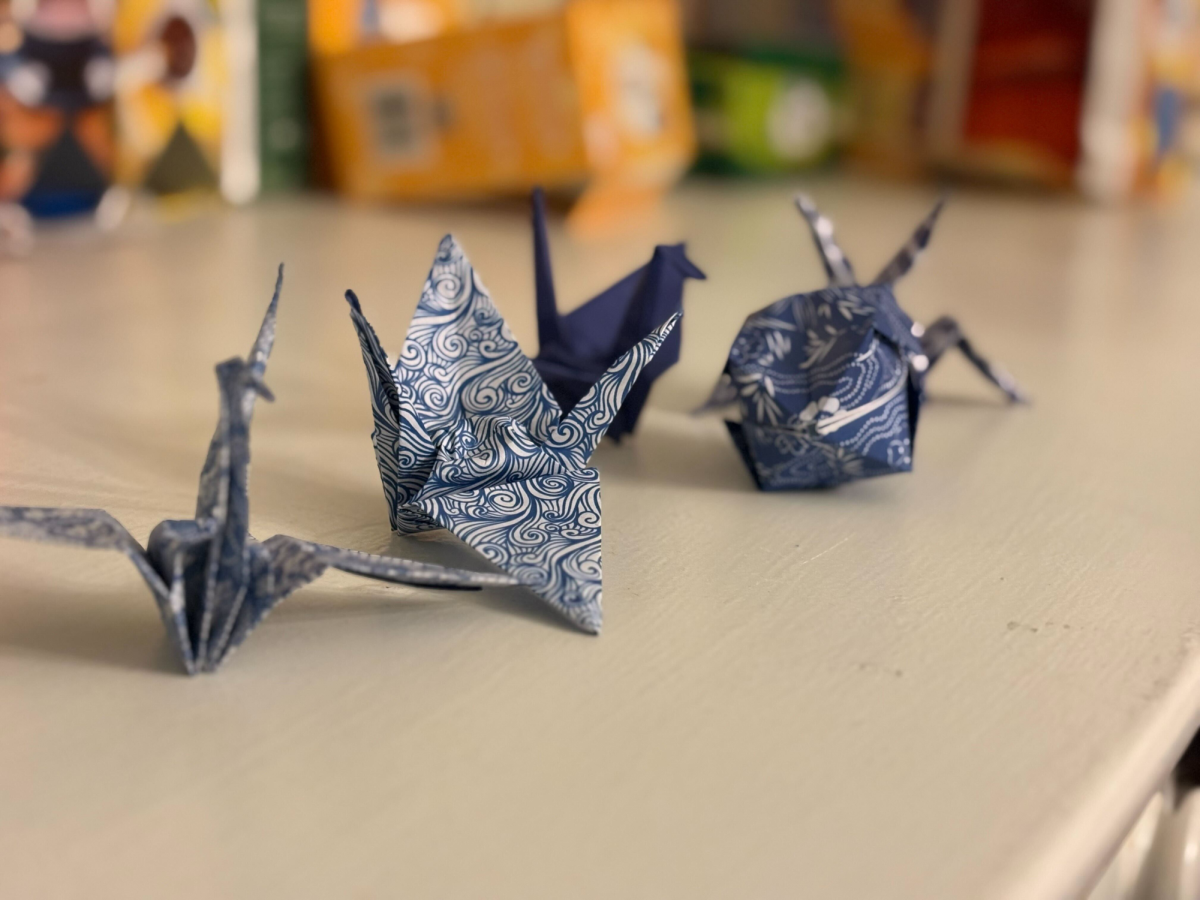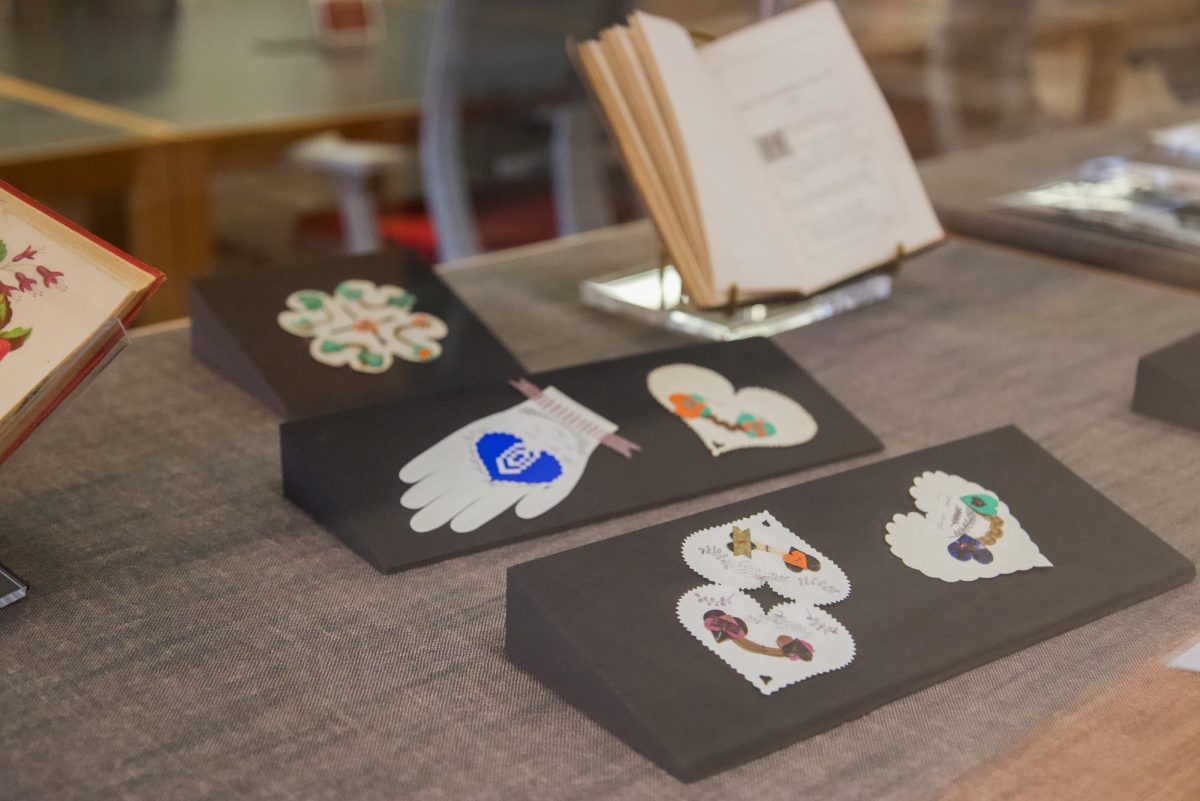The “Oberlin Reader,” a new sculpture commissioned by the Friends of the Oberlin College Libraries, was erected this summer outside the A-level of Mudd Center. Master stone carver Nicholas Fairplay was contracted for the design.
Fairplay, a European-trained stone carver, has a body of work on display from Westminster Abbey to New York’s Cathedral of St. John the Divine. He now owns Fairplay Stonecarvers LLC in Oberlin. Fairplay donated the slab of Indiana limestone used in the new “Oberlin Reader,” which is the same type of limestone used in the facade of the building.
Over the summer, Grounds Service Manager Becky Bode worked with gardeners, beautifying the area, developing a small mulch garden with a loose stone path leading to the statue and bench.
“We wanted to activate the small courtyard and garden below the ramp of [Mary Church] Terrell [Main] Library,” Azariah S. Root Director of Libraries Valerie Hotchkiss wrote in an email to the Review. “First we cleaned up the plants and then we decided that a sculpture of some kind would be nice, along with a nicer ‘contemplation garden’ and a bench. Conceived as a ‘gathering place,’ we also ordered three nice tables for the concrete area — and there are plans for a student chalk mural on the wall down there.”
In July, the sculpture was delivered by crane. Its accompanying bench has an inscription in Greek which translates to “a healing place to the soul” — the words on the door of the Library of Alexandria.
Seated on the bench, students would have a view of the opposite side of the monolithic stele sculpture, where an updated version of a familiar figure sits.
“At first, the committee asked Nicholas [Fairplay] to carve an updated version of our mascot, ‘The Reading Girl,’” Hotchkiss wrote. “The design was lovely, but when we saw it, we began to think about what ‘updating’ really means.”
Oberlin’s iconic marble statue, “The Reading Girl,” sculpted by John Adams Jackson, has been studying her book in the Oberlin College libraries since 1885. In her longtime home in Mudd Center, she sports various ever-changing accessories, including necklaces, COVID-19 facemasks, and — always — a size six Converse sneaker.
“She has witnessed the growth of the Oberlin College Libraries, represents the opportunities the college has provided women scholars, and is a reminder of the value of physical books in the digital era,” The Oberlin College Libraries website reads.
According to a 1980 edition of The Oberlin Observer, “The Reading Girl” was retired from her former place in Carnegie Building, then known as Carnegie Library, after she was subject to vandalism around 1960; for 15 years, she waited silently in the basement of the Allen Memorial Art Museum and, in 1975, she was moved to the barn behind Johnson House. Only in 1980 was she “rescued” by former Director of Libraries William A. Moffett, who moved her to her current residence as the pearl of Terrell Main Library.
“Moffett notes she shows signs of neglect, if not of age: some fingers and toes are missing,” the Observer reads. “Because she ‘is not of a piece’ with the first level decor, he thinks she might eventually be located somewhere else in Mudd. ‘But for now,’ he says, ‘battered and marred though she be, ‘The Reading Girl’ is back.’”
Despite Moffett’s doubts, “The Reading Girl” has become an important part of Terrell Main Library’s first floor and a recognizable figure for Obies new and old. The team at the libraries hoped to modernize the statue to make her relatable to all.
“It was the Director of the Art Museum, Andria Derstine, who first suggested that we place The Reading Girl in one of the famous ‘womb chairs’ which are iconic for our library,” Hotchkiss wrote. “From there, we quickly realized that we did not want a specifically-gendered reader, but rather ‘THE’ Reader, a universal figure that all could relate to. Nicholas [Fairplay] took our ideas and created the wonderful new ‘Oberlin Reader,’ a person in a womb chair with an open book in arms, two legs — and Converse gym shoes, of course! We loved the design and the Friends of the [Oberlin College Libraries] commissioned Nicholas to create it.”
The new “Oberlin Reader” statue contributes to a legacy of art on display in the libraries. Terrell Main Library frequently displays curated exhibitions at its main entrance, and the walls of all floors are decorated with art that watches over students as they study. The library is also recognizable for its landmark brutalist architecture and the iconic design of its beloved womb chairs.
Hotchkiss has high hopes for new traditions involving the statue.
“I am so pleased to see this beautiful tribute to reading and to Oberlin readers in particular,” Hotchkiss wrote. “I hope the sculpture itself will become a place where students gather, take selfies, and contemplate. Perhaps a tradition will even get started, such as touching the Converse shoe for good luck before an exam or leaving a flower at the base of the stele every time you fall in love with a book. I am sure that Oberlin students will make it their own!”
The sculpture and its surrounding contemplation garden will have a dedication Sept. 29 from 3:30–4:30 p.m. All are welcome.












